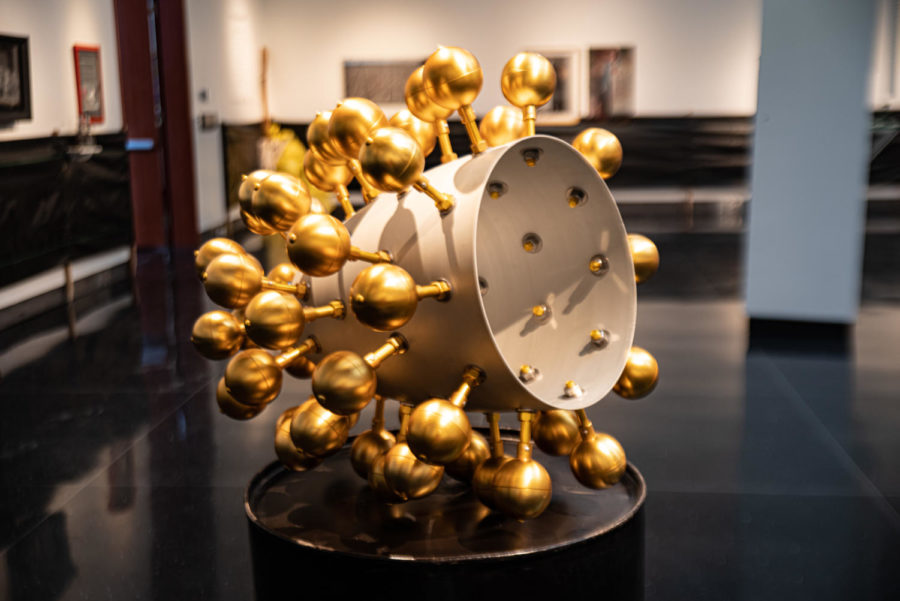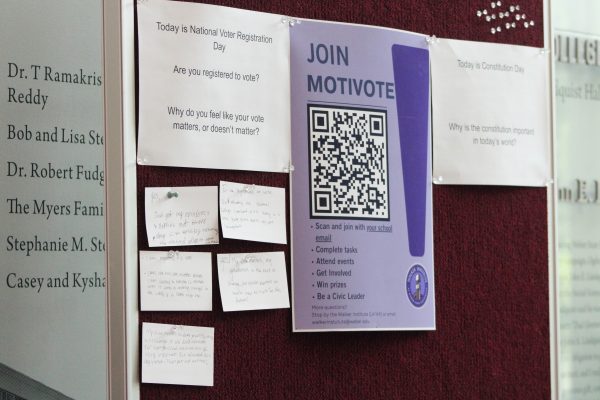Exhibit A-nthropocene
Constructs for the Anthropocene is the new exhibit in the Mary Elizabeth Dee Shaw Gallery. The artist, Buster Simpson, describes it as “… a compilation of studio public art projects addressing some of the prime concerns of climate disruption.”
But what exactly is the Anthropocene? The Merriam-Webster dictionary describes it as “the period of time during which human activities have had an environmental impact on the Earth regarded as constituting a distinct geological age.”
The exhibit reflects this large theme, with objects of human design being reconstructed and repurposed to provide a new artistic meaning of how people can better affect their environment.
A piece titled “Umbrellas as Agitprop” showcases three umbrellas with pH dye to indicate acid rain and two more umbrellas with Kevlar paint to show support for Hong Kong’s Umbrella Revolution.
Other pieces are shown on public display elsewhere, such as the SRO Bedframe Tree Guards, which emphasizes repurposing items rather than throwing them away by using reshaped cast-iron bed frames to help guard newly-planted trees grow safely in the streets of Seattle. Simpson describes the bed frames as a “poetic utility” and being “… steeped in this kind of a shaggy dog story.”
When asked how he began his journey in art, Simpson said he “… never knows when we get into it, but it is wired in us.” What drove him to continue making art was rising environmental concerns and wanting to help bring a call to action.
A wide variety of impressions was present at the gallery’s opening reception. Sarah Davies, a junior pursuing a Bachelor of Fine Arts, admired the pieces and how they utilized and often repurposed different materials.
Cairo Murphy, a graduate of Business administration, commented on how the pieces were very modern, and not feeling very traditional in their construction.
When asked about the topic of the pieces being tied through climate disruption and a call for ecological action, both Davies and Murphy found that the exhibit perfectly represented the importance of artists in society.
“It is important as artists to share their voice,” Davies said, calling artists a kind of “spokes-person” to demonstrate how Simpson is able to call attention to the environment and humans’ impact on it through his work.
Brendan Bates, computer engineering major, found himself at an internal conflict with Simpson’s work. While still enjoying some of the pieces on display, he felt that others contradicted the message of the exhibit.
In regards to one piece titled “Thalia & Melpomene,” Bates said “… holding trash will just create microplastics.”
The aforementioned piece shows wooden frames around different plastic containers.
Bates also found that the comments of bettering the environment and the Anthropocene as poetic weren’t really representative of the people involved. Instead, humans themselves make calls-to-action poetic.
The exhibit will remain in the gallery until Nov. 5, with Buster Simpson returning to give an artist lecture on Oct. 18.













